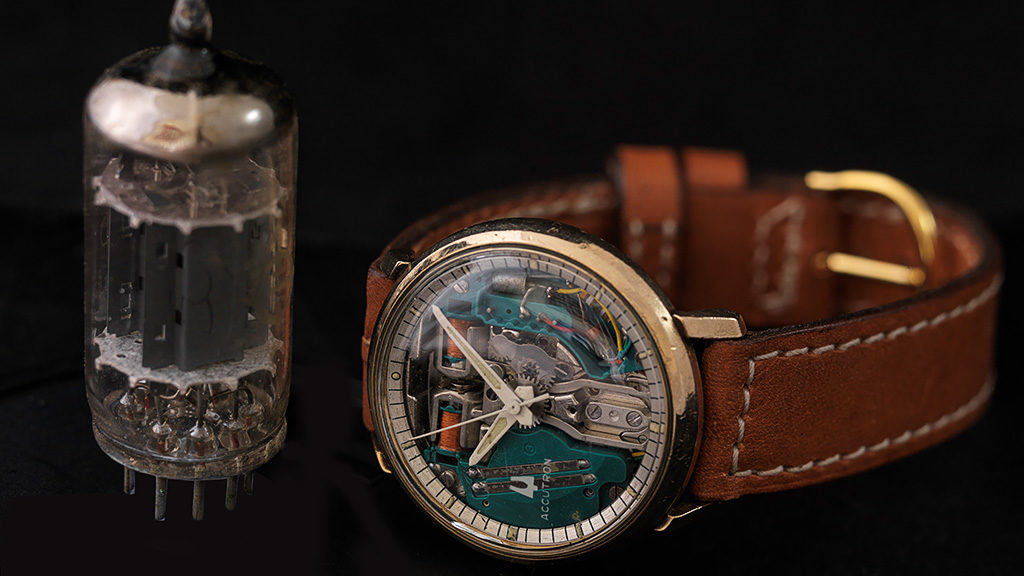Vintage review: Bulova Accutron Spaceview

DEPLOYANT - the watch magazine for collectors, by collectors
Editor: Our Technical Chief takes a close look at the Bulova tuning fork as an interesting engineering feat to create a different kind of watch movement Inspired by a vintage Spaceview she picked up recently, follow her as she delves into the mysteries of this amazing watch.
A bit of history
“It doesn’t tick It hums” That was the advertising line in the 1960s.
When the Accutron was first released, the Spaceview was simply a marketing display design to give customers a glimpse into the working concept of a tuning fork movement But it garnered so much interest that Bulova quickly decided to turn that design into a production piece, and named it the Spaceview
The name could perhaps be traced back to its earlier applications on Spacecrafts.
Even before the first consumer wrist watch was introduced, Bulova has been serving NASA programs since 1958, providing the same Accutron movement as a timer aboard communication satellites The most notable was the use of 3 Accutron devices on the Gemini II mission; and the Accutron timer on the seismometer on Apollo 11 which marked man’s first landing on the moon The timer marked man’s first step on the moon as 2:56:19am GMT, July 21, 1969.
While clearly a choice as an astronaut’s wrist watches, it surprisingly did not pass all the tests to outdo the Omega Speedmaster which eventually became the Moon Watch that we know today However, there have been evidence that a Bulova chronograph (not Accutron) wrist watch did make a landing on the moon during Apollo 15 and on subsequent missions, an interesting story that you can read more from here
Tuning fork movement started development as early as 1940s, focusing on adapting it for space use, before introducing the movement as a consumer wrist watch.
It was marketed as Accutron by Bulova, meaning Accurate Electronic As its name would suggest, it was indeed the most accurate watch of its time, boasting a guaranteed accuracy of 1 minute per month and usually achieving accuracies less than 5 seconds a month This was of course overtaken by the quartz when Seiko unveiled the Astron in 1969
The Movement
The movement is fantastic.
To appreciate how the tuning fork and the copper coils interact, we have to go back to some high school physics on the topic of electromagnetic induction We have to recall Faraday’s Law of Induction, which states that when the magnetic flux linking a circuit changes, an electromotive force is induced in the circuit proportional to the rate of change of the flux linkage The force that is induced would oppose the direction of motion that caused the initial change in magnetic flux.
We also have to know the basic functions of transistors, capacitors and resistors.
The battery drives a current through the 2 main coil assemblies as well as the rest of the electronic circuit When the coils have a current going through them, it causes a magnetic flux to build up and is amplified by the core within Faraday’s Law []
The post Vintage review: Bulova Accutron Spaceview appeared first on DEPLOYANT
. Source